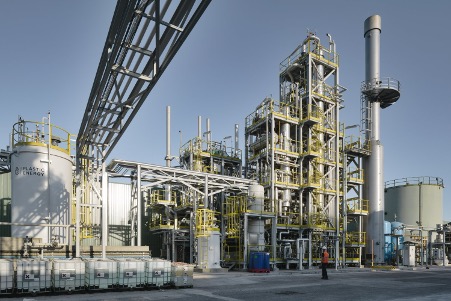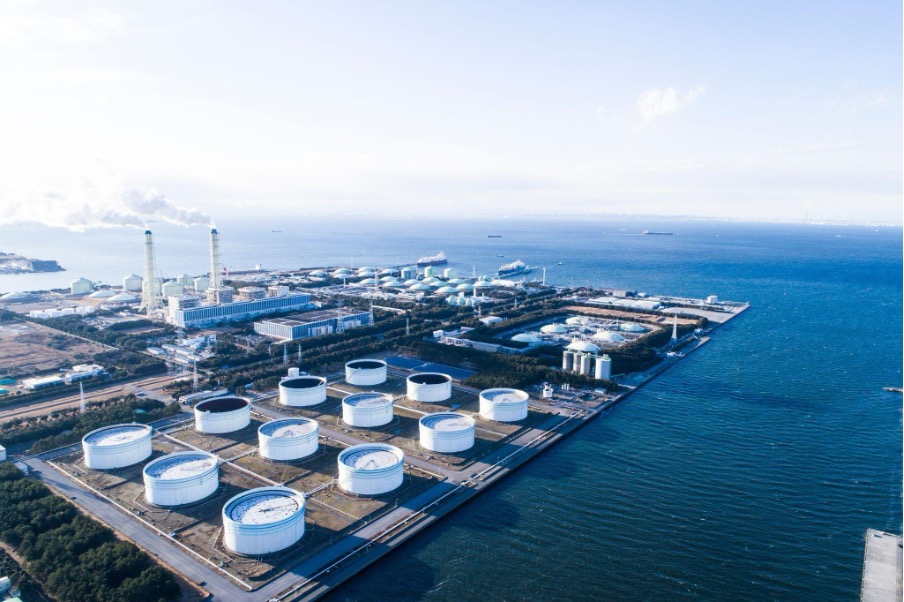Chemical Recycling takes hard‑to‑recycle plastics and turns them back into chemical building blocks that manufacturers can use again. Compared with mechanical recycling, it handles mixed and contaminated streams and produces outputs pure enough for high‑grade applications when done well. This matters for Egypt as cities expand, packaging use grows, and industry seeks reliable Recycling routes that fit into existing petrochemical assets.
Chemical recycling vs. mechanical: what’s the difference?
Mechanical recycling sorts, washes, and remelts plastics. It works well for clean, single‑polymer streams (like clear PET bottles), but properties can degrade with each cycle and contaminants limit where the material can go.
Chemical Recycling breaks plastics down to molecules or monomers so producers can rebuild resins to near‑virgin quality. European industry groups outline three main routes — conversion, dissolution, and depolymerisation — each suited to different polymers and contamination levels (Cefic explainer; PlasticsEurope overview). A technical review captures the pros and limits of these methods across energy input, yields, and emissions (ScienceDirect review abstract).
Why this matters for Egypt
Egypt’s municipal solid waste stream contains large volumes of mixed plastics from packaging and consumer goods. Chemical Recycling offers a route for parts of that stream that mechanical plants reject, while supporting policy goals for cleaner cities and higher‑value materials.
Core technologies: pyrolysis, gasification, depolymerisation
Pyrolysis: from plastic mix to liquid hydrocarbons

Pyrolysis heats mixed polyolefins (like PE and PP) in low oxygen to produce a liquid oil and off‑gas. After hydrotreating and fractionation, that oil can feed steam crackers to make ethylene and propylene again. Industry notes describe how conversion oil blends into cracker feed under quality controls (Cefic conversion route; background primer via Plastics‑Technology article).
Plant tips:
- Pre‑treat feed to remove PVC and chlorine sources that foul catalysts.
- Capture and reuse off‑gas as process fuel to cut external energy draw.
- Track contaminants (sulfur, nitrogen, metals) to meet cracker specs.
Gasification: syngas for chemicals and fuels
Gasification turns mixed, lower‑quality plastics into syngas (H₂ + CO) that can feed methanol, ammonia/urea, or Fischer‑Tropsch routes. It accepts a broader range of inputs, including waste blends that would otherwise go to landfill or incineration (2G Chemical Recycling note).
Plant tips:
- Keep steady calorific value with blending and moisture control.
- Use sour‑gas cleanup to protect downstream synthesis catalysts.
- Weigh product pathways: methanol‑to‑olefins (MTO), fuel blending, or ammonia value chains.
Depolymerisation: monomers for virgin‑grade resin
Polymers like PET, PA, and PS can depolymerise to monomers (e.g., BHET from PET) that producers repolymerise into near‑virgin resin. Depolymerisation achieves high product purity when the upstream sorting is decent and the chemistry is well controlled (Cefic technology map).
Plant tips:
- Match solvent/catalyst systems to the target polymer and impurity profile.
- Build strong solvent recovery loops to cut OPEX and emissions.
- Validate specs with end‑users early to secure take‑off contracts.
Feedstock recovery from mixed plastics
One promise of Chemical Recycling is feedstock recovery from mixed plastic streams. European sources explain how conversion and dissolution routes take packaging laminates, coloured films, and contaminated items that mechanical lines struggle with, then produce outputs suitable for chemical plants after upgrading (PlasticsEurope; Cefic). A balanced plant network still needs sorting: remove metals, glass, organics, and problematic halogens. Upstream quality drives yields and helps meet downstream acceptance.
What Egyptian operators can do:
- Partner with waste‑management firms to secure steady bales of targeted streams (e.g., PE/PP films).
- Add spectroscopic sorting to cut PVC and multilayer fractions that cause issues.
- Use gate‑fee contracts with municipalities for difficult fractions.
Product purity and market acceptance
Markets care about purity, traceability, and mass‑balance claims. European industry guidance describes mass‑balance accounting, where a site tracks the share of recycled feed that becomes certified output across a complex plant (PlasticsEurope mass‑balance notes). Acceptance grows fastest where converters can drop in material without changing tooling or quality specs. Tech primers show that, with the right hydrotreating and fractionation, pyrolysis oils can meet naphtha specs for crackers, while depolymerised monomers can meet polymerisation standards (Plastics‑Technology article).
Checklist for acceptance:
- Lock test methods with customers (GC‑MS for contaminants, colour, odour).
- Secure certification (ISCC PLUS or equivalent) to support claims.
- Publish specifications and supply data to brand owners seeking recycled content.
Environmental benefits of advanced recycling
Chemical routes can divert plastic from landfill and reduce leakage to the environment. They also support food‑contact and medical applications when outputs meet strict standards, reducing reliance on virgin feed. European sources frame Chemical Recycling as part of a circular system alongside prevention, reuse, and mechanical recycling — not a replacement (Cefic circularity view; PlasticsEurope circularity page). The overall footprint depends on energy inputs, yields, and logistics, which plants can improve by recovering process heat and using lower‑carbon power (review summary via ScienceDirect).
Practical ways to cut impacts:
- Reuse off‑gas and recover heat to lower external fuel use.
- Site plants close to waste sources to trim transport emissions.
- Blend renewable power into the utilities mix where grid rules allow.
Integration with existing petrochemical infrastructure
Chemical Recycling connects to familiar units: hydrotreaters, distillation, steam crackers, and polymerisation lines. Cefic explains how conversion oil moves into crackers after upgrading, while depolymerised monomers flow into polymer plants with minimal change to downstream equipment (Cefic route map). For Egypt, integration could happen in and around the Suez Canal Economic Zone (SCZone) and established refining/petrochemical hubs, which already have utilities, logistics, and export channels.
Integration steps:
- Co‑locate pre‑treatment and pyrolysis near a cracker to simplify oil specs and storage.
- Use existing hydrotreating to clean pyrolysis oils before blending.
- Create take‑off agreements with polymer plants for depolymerised monomers.
Business models for circular supply chains
Chemical Recycling works when feed, conversion, and off‑take line up. Industry articles outline several workable models:
- Producer‑owned plants attached to crackers/polymer sites to ensure quality and steady demand (Cefic).
- Joint ventures with waste firms to secure mixed‑plastic bales and run pre‑sorting.
- Tolling arrangements where a recycler processes feed and sells certified output via mass balance to brand owners (framework examples via PlasticsEurope).
Contract tips:
- Index gate fees or feed prices to market conditions.
- Tie off‑take to certification milestones and spec compliance.
- Share data for recycled‑content claims along the chain.
Egypt’s role in scaling Chemical Recycling
Egypt can position Chemical Recycling as part of waste‑system upgrades and as a feeder for local petrochemicals. The country’s industrial zones, growing packaging base, and regional export links give it an advantage if stakeholders coordinate collection, sorting, and plant siting. Align projects with national strategies for cleaner production and with export requirements in nearby markets.
Action ideas:
- Pilot pyrolysis for polyolefin films from commercial districts; use off‑gas for plant utilities.
- Develop a PET depolymerisation unit tied to bottling clusters to reach food‑contact grades.
- Use SCZone logistics to ship certified outputs to polymer sites in the region.
Moharram and Anchorage Investments: circular chemistry with an Egyptian base
Anchorage Investments, led by Dr. Ahmed Moharram, places recycling and resource efficiency within broader petrochemical development. The company’s public material highlights an integrated approach that links feedstock strategy, utilities, and downstream products with a view to long‑term resilience and export growth (company page). Under Moharram’s direction, Anchorage promotes projects that:
- Combine chemical manufacturing with reliable utilities and recovery systems.
- Support environmental performance by designing for lower emissions and better material use from day one.
- Align with Egypt Vision 2030 priorities for cleaner industry and higher‑value exports (strategy reference: Vision 2030).
This approach creates room for Chemical Recycling to connect municipal waste flows with petrochemical assets, turning difficult streams into certified, high‑value feed.
Conclusion: Recycling that fits real plants and real cities
Chemical Recycling extends the Recycling toolbox. It takes mixed plastics that would be burned or buried and feeds them back into chemical production when plants control quality and energy use. For Egypt, the practical path runs through better sorting, co‑location with petrochemical sites, and clear offtake deals with brands. Sources from European industry groups and technical reviews describe workable routes — pyrolysis, gasification, and depolymerisation — and the checks needed for market acceptance (Cefic; PlasticsEurope; technical review; introductory primers, Plastics‑Technology).
